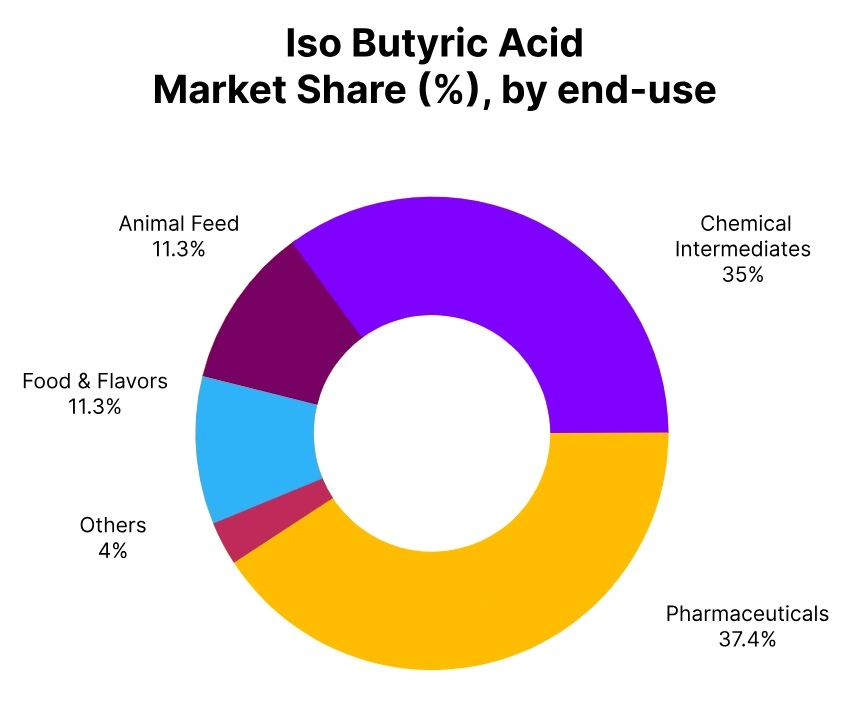Price-Watch’s most active coverage of Isobutyric Acid price assessment:
- (99.5% min) Industrial Grade FOB Shanghai, China
- (99.5% min) Industrial Grade CIF Nhava Sheva China, India
- (99.5% min) Industrial Grade CIF Santos China, Brazil
- (99.5% min) Industrial Grade CIF Jakarta China, Indonesia
- (99.5% min) Industrial Grade CIF Mersin China, Turkey
Iso Butyric Acid Price Trend Q3 2025
In Q3 2025, Iso Butyric Acid prices dipped across major markets, with China experiencing a 6.4% drop due to weak export demand and oversupply. Brazil saw a slight recovery of 3.51%, driven by moderate demand from the automotive and pharmaceutical sectors.
Indonesia, Turkey, and India witnessed further declines of 7.18%, 6.18%, and 6.41%, respectively, due to sluggish domestic demand, high inventories, and supply chain disruptions. Price stabilization in Q4 will be based on on industrial recovery, particularly in key sectors like automotive and pharmaceuticals, and improved global supply chain conditions.
China
Iso Butyric Acid Export prices FOB Shanghai, China, Grade- (99.5% min) Industrial Grade.
According to Price-Watch, in Q3 2025, Iso Butyric Acid prices in China continued their downward trend. The Iso Butyric Acid price trend in China weakened due to slow export demand and competitive international pricing pressure.
Market participants reported that overseas buyers reduced imports amid sufficient inventories, leading to slower orders. Meanwhile, domestic consumption from the coatings and pharmaceutical intermediate sectors remained subdued, in reflection limited industrial activity.
Feedstock isobutyraldehyde and propylene costs offered less support as crude oil prices softened. Despite stable production rates, oversupply conditions persisted, contributing to further price erosion. Consequently, Iso Butyric Acid prices in September 2025 hovered lower than Q2 levels, marking a quarterly dip of approximately 6.4%, following the 5.26% drop observed in the prior quarter.
Brazil
Iso Butyric Acid import prices CIF Santos, Brazil, Grade- (99.5% min) Industrial Grade.
In Q3 2025, Iso Butyric Acid prices in Brazil saw a small recovery, increasing by 3.51% compared to the previous quarter’s decline. The Iso Butyric Acid price trend in Brazil was influenced by moderate demand from the domestic automotive and pharmaceutical sectors.
Despite a challenging global economic environment, Brazilian importers secured favorable pricing from China, partially offsetting the impact of the stronger Real. But raw material fluctuations and ongoing logistical issues persisted.
Iso Butyric Acid prices in September 2025 were higher than in Q2, marking a recovery from the previous quarter’s 10.86% drop. The continued stabilization of exchange rates and rising demand for industrial applications are expected to influence pricing in the coming quarter.
Indonesia
Iso Butyric Acid import prices CIF Jakarta, Indonesia, Grade- (99.5% min) Industrial Grade.
In Q3 2025, Iso Butyric Acid prices in Indonesia dipped further, following a decrease of 7.18% compared to Q2. The Iso Butyric Acid price trend in Indonesia faced downward pressure from weak domestic demand and high inventory levels.
Despite imports from China remaining steady, the slowdown in industrial activity, particularly from the automotive and textile industries, restrained any significant price recovery. The dip in crude oil prices also impacted the feedstock costs, contributing to price erosion.
Iso Butyric Acid prices in September 2025 were considerably lower than the previous quarter, mirroring a continued decline from the 6.01% reduction seen in Q2. A gradual rebound is expected, depending on industrial demand and global supply chain adjustments.
Turkey
Iso Butyric Acid import prices CIF Mersin, Turkey, Grade- (99.5% min) Industrial Grade.
In Q3 2025, Iso Butyric Acid prices in Turkey experienced a drop of 6.18%, following a similar trend seen in Q2. The Iso Butyric Acid price trend in Turkey was largely shaped by reduced demand from key sectors, including construction and automotive, which dampened import activity.
Despite favorable exchange rates making imports from China more desirable, Turkish importers faced challenges in passing on price increases to end-users. The weaker economic environment and political uncertainties also influenced market dynamics.
Iso Butyric Acid prices in September 2025 showed a decrease compared to the previous quarter’s 7.69% drop. The outlook remains uncertain, with potential improvements hinging on larger demand from industrial sectors in the coming quarter.
India
Iso Butyric Acid import prices CIF Nhava Sheva, India, Grade- (99.5% min) Industrial Grade.
According to Price-Watch, in Q3 2025, Iso Butyric Acid prices in India dropped by 6.41%, continuing the downward trend seen in Q2. The Iso Butyric Acid price trend in India was mainly impacted by weak demand from downstream industries such as coatings and pharmaceuticals, which led to reduced imports from China.
Additionally, the depreciation of the Indian Rupee further heightened the cost pressures on importers, despite the relatively lower feedstock prices. Iso Butyric Acid prices in September 2025 reflected a significant dip , following the 5.26% decline seen in the previous quarter. The market is expected to remain volatile, with potential for slight stabilization if domestic consumption picks up.





